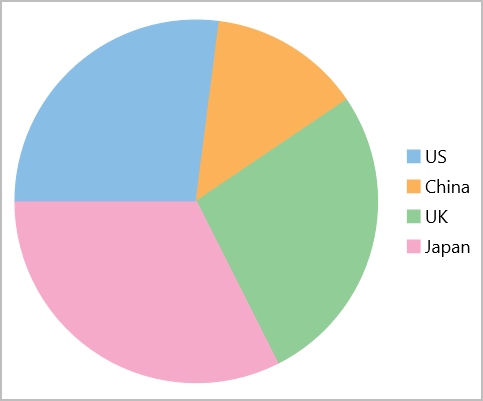Pie Charts
Pie charts, the most common tools used for data visualization, are circular graphs that display the proportionate contribution of each category which is represented by a pie or a slice. The magnitude of the dependent variable is proportional to the angle of the slice. These charts can be used for plotting just one series with non-zero and positive values.

Create a Pie Chart
Pie chart is represented by the FlexPie class in FlexChart. To create a Pie chart through code, follow these steps:
In XAML, initialize the FlexPie control and configure the X and Y axes by setting the BindingName and Binding properties, respectively. Then set up the data source through the ItemsSource property., as showcased in the following code:
<c1:FlexPie x:Name="chart" ItemsSource="{Binding Data}" Binding="Q1" BindingName="Country" Margin="10"> </c1:FlexPie>
Switch to C# and use the following code to create the data source for the chart.
public class DataItem { public string Country { get; set; } public double Q1 { get; set; } public double Q2 { get; set; } public double Q3 { get; set; } public double Q4 { get; set; } } List<DataItem> data = CreateData(); public List<DataItem> Data => data; public static List<DataItem> CreateData() { var countries = new string[] { "US", "China", "UK", "Japan" }; var count = countries.Length; var result = new List<DataItem>(); var rnd = new Random(); for (var i = 0; i < count; i++) result.Add(new DataItem() { Country = countries[i], Q1 = rnd.Next(20), Q2 = rnd.Next(20), Q3 = rnd.Next(20), Q4 = rnd.Next(20) }); return result; }


